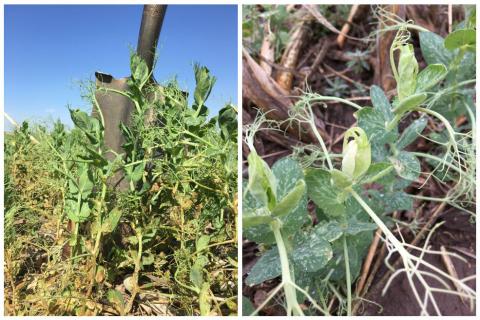Seeding Practices and Nitrogen Management for Western Nebraska Soybean: What Matters and Why
March 30, 2020
Continuous corn is the most common irrigated crop sequence in southwest Nebraska. Although rotating to other crops, such as soybeans, can mitigate some production issues of continuous corn and often boost the next year’s corn yield, larger adoption of soybeans has not readily occurred in this area.
Soybean Fertility Study in Western NE: What is Limiting High Yield and Protein?
February 7, 2020
Public universities and private companies were contacted early in 2019 to provide input on the study protocol that would compare multiple fertility programs for soybeans in western NE. A total of 12 fertility programs were compared.
Main Factors Influencing Yellow Field Pea Protein Content in Nebraska
January 23, 2020
Yellow field peas (Pisum sativum L.) recently gained popularity across Nebraska due to their rotational benefits and increase in consumers' demand for plant-based alternatives to meat and dairy products.
Update: Yield and Water Use of Field Peas and Chickpeas Under Irrigation
November 7, 2019
Research in southwest Nebraska looks at potential water savings from adding field peas and chickpeas in corn-soybean rotations where irrigation water is limited. Both pea crops efficiently used early-season precipitation for good yields.
Yield and Water Use of Field Peas and Chickpeas Under Irrigation
November 7, 2019
In southwest Nebraska, irrigating corn and soybeans with limited water is challenging due to typically dry weather conditions and high crop water use (i.e., evapotranspiration or ET) in July and August.
Field Pea and Chickpea Germination and Yield as Affected by Tillage
October 17, 2019
Research conducted with field peas and chickpeas near Grant found that yield increased slightly with the use of tillage; however, tillage was not recommended for dryland and semi-arid conditions.
Study of Wheat Behind Field Peas, Chickpeas, Soybeans and Fallow
October 4, 2019
Field demonstration plots near Grant compare water availability, crop water use efficiency, yield, and other factors when wheat is planted after fallow, field peas, chickpeas, and soybeans.
Field Pea Guide to Herbicide Carryover and Herbicide Efficacy
March 21, 2019
When integrating field peas into a crop rotation, herbicide carryover is one of the most important things to consider. This guide can help you plan your herbicide program to avoid potential crop injury due to carryover injury.





